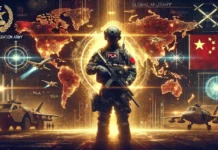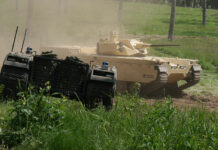Assessment of the Second Lebanon War By Col. David Eshel
In the years since Israel ended its military occupation of southern Lebanon in May 2000, Israel’s intelligence community watched warily as Hezbollah built up its military presence in the region. When Hezbollah militants kidnapped two Israeli soldiers on July 12, 2006, the Israeli military was ready to react almost instantly, based on years of extensive intelligence gathering. “Of all of Israel’s wars since 1948, this was the one for which Israel was most prepared,” said Gerald Steinberg, professor of political science at Bar-Ilan University. “In a sense, the preparation began in May 2000, immediately after the Israeli withdrawal, when it became clear the international community was not going to prevent Hezbollah from stockpiling missiles and attacking Israel”.
A perusal of thick and detailed secret dossiers might show how deeply Israeli intelligence was able to penetrate certain levels of Hezbollah’s alignments, but also how limited in importance this was in the decisive test of utilizing the secrets. “Hezbollah’s Combat Concept” dated January 2006 is a highly restricted 130-page booklet, crammed with data on bunkers and Katyusha rockets and other military installations. Its author is a lieutenant colonel in Military Intelligence (MI), personal aide to MI director and formerly head of the Lebanon section in the intelligence department of Northern Command. The problem was, as is unfortunately so often with top secret documents, in hierarchical organizations, that while all this wealth was readily available, its contents were regarded so restricted, that only a select few were allowed to feast their eyes on its contents. The inevitable result was, as ridiculously as it may sound, that even the commander of 91st Division, which was in charge of the Lebanese border, was not party to such life-saving information before the war started on July 12!
The problem of intelligence gathering capabilities intensified further with the outbreak of war. As is usual in combat situations, the intelligence that is available to the troops before the war, a great deal of which has been built up meticulously over years, goes up in smoke as soon as the troops go into action. The bank of targets that has been prepared diminishes after the first wave of attacks. There is a tactical intelligence difficulty in pinpointing new targets during the fighting, until the forward combat elements actually make contact with the enemy. The conduct of the battle, from there on, depends on tactical intelligence, mostly real-time in nature, as targets come into focus by the advancing troops, in modern warfare, through tactical intelligence elements, such as TUAV, electro-optical observation etc.
Moreover, it is especially difficult to run human agents to provide actual information: Communications with them, even if they are equipped with state-of-the-art devices, usually break down because of a lack of physical contact. This became evident when the ground war started along the border region. Although Israeli intelligence had operated Lebanese human intelligence (HUMINT) agents for years, since the “Security Zone” era, some of which remained active, long after the IDF withdrew in May2000. During the IDF’s 18-year presence in Lebanon, the members of the IDF HUMINT unit were especially active across Israel’s northern border. To this day the Lebanese press occasionally runs stories about the arrest and trial of local agents who operated in the service of this unit. In November 1998, a Lebanese court convicted no fewer than 57 citizens of collaborating with Israel intelligence. But many of the surviving agents were forced to leave their homes in South Lebanon when the IDF distributed Psychop leaflets calling to evacuate their villages before these came under fire. Lack of HUMINT became critical when the fighting intensified and Hezbollah fighters mingled with the population in the villages, but were difficult to identify from non combatants.
Mossad can certainly high marks for much of the high precision intelligence, which enabled the air attacks to pinpoint Hezbollah medium rocket sites and neutralize most of them during the 48 hours, which saved most of Israel’s major towns from these larger rockets. Air force intelligence also performed in clock-work fashion, identifying Hezbollah rocket launchers seconds after firing, which were then destroyed by immediate air attack through “cab-rank” cruising air assets, in the suspected environment. The unique rapid reaction “sensor-to-shooter kill-chain” tactics, similar to performance in the Gaza Strip, paid off handsomely in Lebanon 2006.
IDF Military Intelligence gathering units ( HUMINT) and signal intelligence( SIGINT) were tasked with obtaining vital intelligence on Hezbollah forward deployments in South Lebanon and their work was in high demand by forward troops, during the initial stages of the war. But all this was not sufficient: For example, one place was indeed identified, using satellite photographs, as a Hezbollah bunker, however only from the ground at short range before contact, were special forces able to discover that it served as the entrance to a previously unknown extensive underground network of caves and bunkers stuffed with missiles. On the other hand, precise intelligence allowed IDF special forces to raid Hezbollah strongpoints deep inside Lebanese territory. The successful commando raids into the Beka’a Valley and Tyre, depended on real-time intelligence. In fact, the surprise raid into Baalbek, the most ambitious air and ground operation of the current conflict, had been conducted, based on excellent intelligence, demonstrating that Israeli forces could strike anywhere
A major element in the Second Lebanon War was Hezbollah’s professional employment of advanced anti-tank missiles. The very presence of such weapons was no surprise to IDF intelligence. In fact, according to declassified reports, one of these was actually captured ( or obtained) and examined by experts long before the war started. What remained obscure, was the massive deployment and tactical method used by Hezbollah with these weapons, which became a dominant star player during all ground engagements. According to official statistics, anti-tank missiles hit 46 tanks and 14 other armored vehicles. However, fortunately, due to enhanced protection, in all these attacks the Merkava tanks actually sustained only 15 armour penetrations.
Senior Armored Corps officers claimed in media interviews during the war, that the defense establishment had refused to provide tanks with the Trophy, a locally developed active protection system which creates a hemispheric protected zone around armored vehicles, such as the Merkava 4 tank. The system is designed to detect and track a threat and counters it with a launched projectile that intercepts the anti-tank rocket. The reason for such costly oversight, was claimed by the authorities, in the aftermath of the war, as lack of funding due to budget cuts!
In overall perspective it seems, at first sight, that Israel’s miscalculation in assessing intelligence information in Lebanon has the same cause as America’s miscalculations in Iraq: plain old grade arrogance underestimating the enemy. It is however important to understand that Mossad and the rest of Israel’s intelligence apparatus are not all-knowing and all-powerful, despite their past successes, which have created an aura of great strength and invincibility around them. It is clear that Hezbollah has studied and learned more than a few lessons itself over the years. Members of its military wing, for example, are far less publicly visible and, by implication, identifiable, than members of Fatah’s militia, which the IDF has been to hunt and target with a highly successful “kill chain” apparatus.
The war in Lebanon may have begun with a string of intelligence failures resulting from the fact that Israel had lowered its alert level on the northern border prior to the Hezbollah raid.
But not all was lost. Last July, the war wiped out most of the vast sum of $4-6 billion the Iranian treasury sunk into building Hezbollah’s military strength. The organization was meant to be strong and effective enough to provide Iran with a formidable deterrent to Israel or the United States embarking on a military operation to destroy the Islamic regime’s nuclear infrastructure. Iran has now been manipulatively robbed of its primary deterrent asset ahead of a probable nuclear confrontation with the United States and Israel. Hezbollah, on Hassan Nasrallah’s hasty orders, squandered thousands of rockets – either by firing them into Israel or having them destroyed by the Israeli air force. This at least, may have been worth the effort by Israel.
For further reading; 2nd Lebanon War Analysis:
- Hezbollah’s Intelligence War
- Israeli Intelligence Dilemmas in Lebanon
- Assessing the performance of Merkava Tanks
- Hezbollah anti-amour Tactics and weapons
- Hezbollah’s Rocket Blitz



















